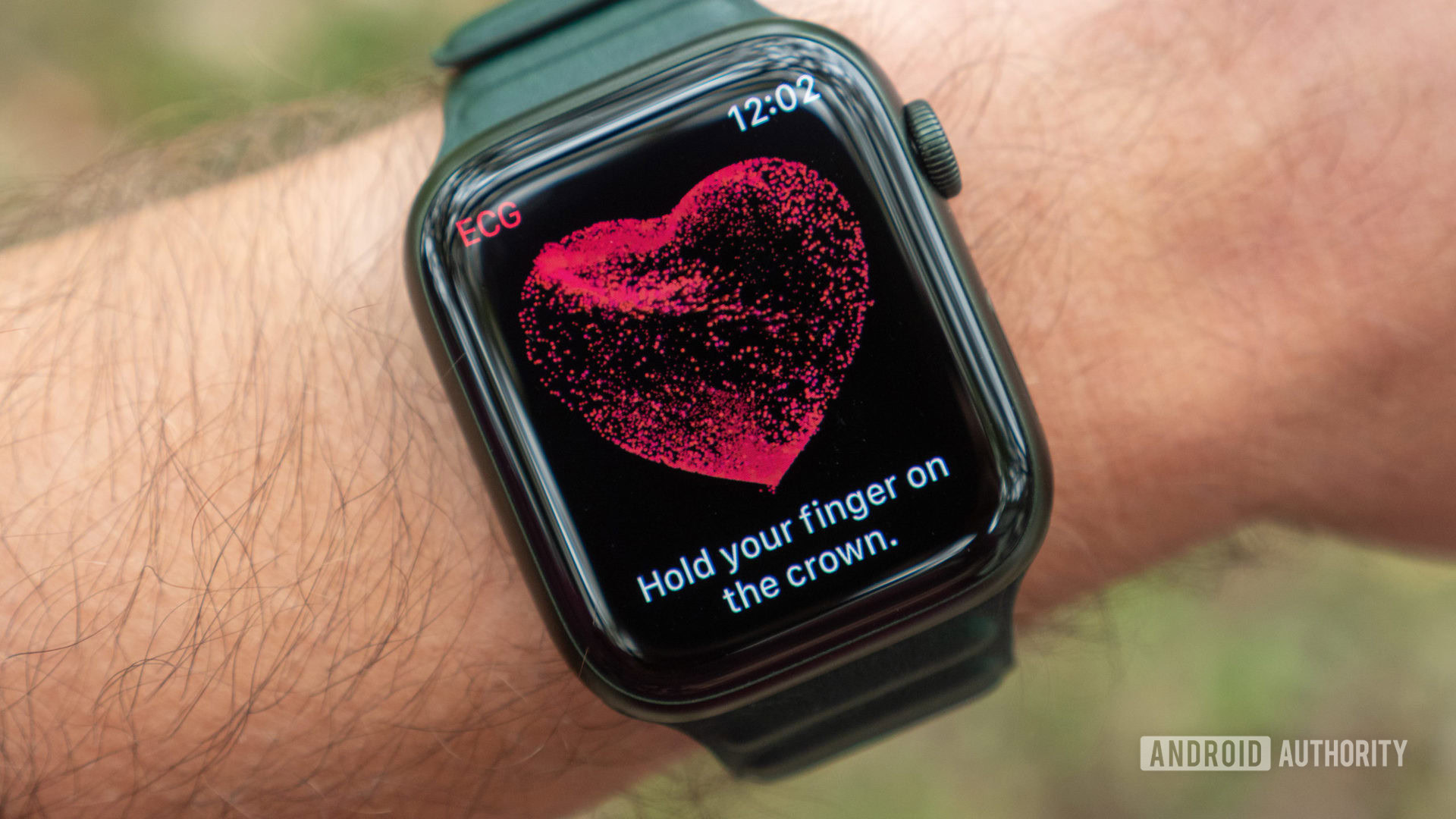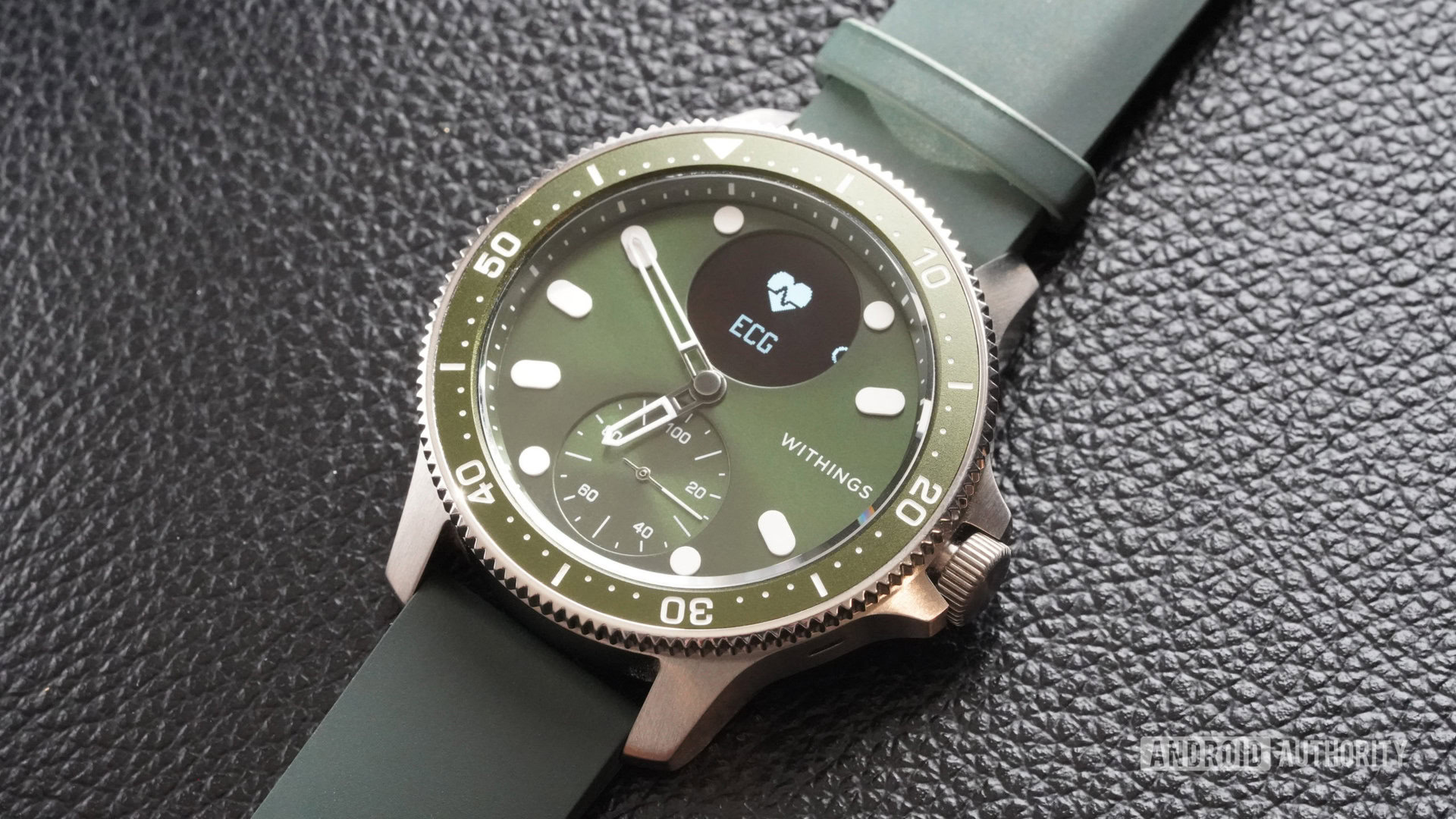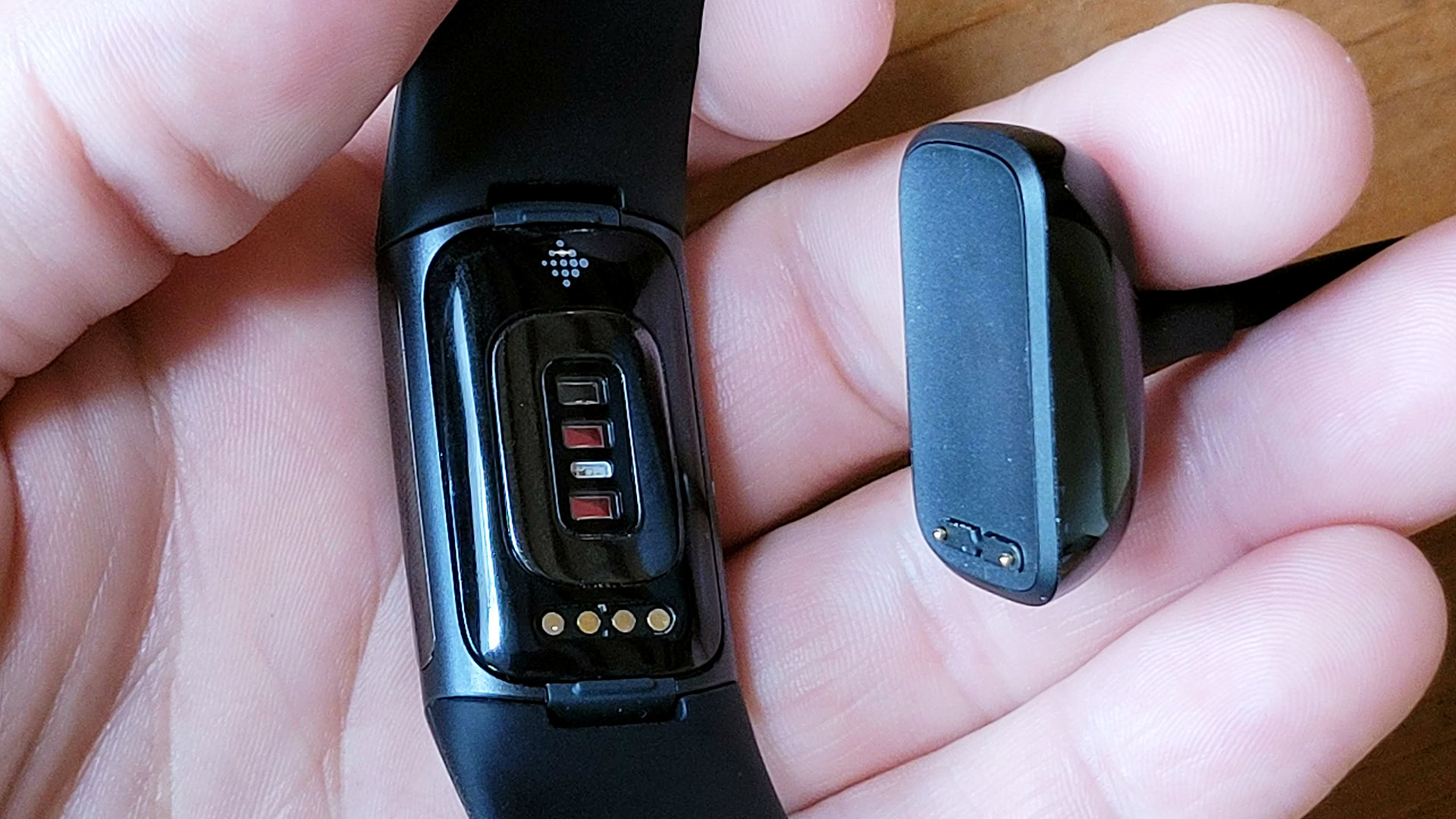Affiliate links on Android Authority may earn us a commission. Learn more.
ECG: What is it and why does it matter?

You may have heard of a feature called ECG (or EKG) making its way onto wearables. Devices such as the Samsung Galaxy Watch 5, Apple Watch Series 8, Withings Scanwatch, and several other smartwatches, now come with an ECG sensor baked in. Find out what you need to know about ECG technology and why it matters in consumer wearables.
What is ECG?

Short for electrocardiogram, an ECG is a test that measures the heart’s electrical activity. It is an easy, noninvasive way for a medical team to detect common heart problems. These can include everything from irregular heart rhythms (arrhythmias) to potentially blocked or clogged arteries. Your doctor may also use an ECG if you have previously had a heart attack or if you are experiencing concerning symptoms such as heart palpitations, a rapid pulse, or chest pain. Similarly, patients who have received heart-related treatments, such as the addition of a pacemaker, may have an ECG used to see how their health is progressing.
An electrocardiogram records the electrical signals produced by the heart. With each beat, an electrical wave causes your heart to contract and pump blood to the rest of the body. An ECG measures this electrical wave to help determine the strength and activity of your heart. Plotting these electrical signals in a graph, an ECG produces a reviewable electrocardiogram. Analyzing this graphical representation of the electrical activity in the heart (and the time between heartbeats) can help determine if your heart’s activity is normal, slow, fast, or irregular. It can also tell if parts of the heart are too large or overworked.
Also read: The best heart rate monitors and watches
ECG vs. EKG: Is there a difference?
The only difference between ECG vs. EKG is the spelling of the abbreviation. ECG is an abbreviation for electrocardiogram or electrocardiograph — both English words — while EKG is an abbreviation for the German spelling of elektrokardiogramm. Functionally, electrocardiogram sensors and elektrokardiogramm sensors are the same.
How does it work?
In the past, this technology was exclusively used by medical professionals to evaluate patients. In an exam room or even in an ambulance, a medical technician attaches ten adhesive electrode patches to a patient’s chest, arms, and legs through this process. These patches connect the patient to a machine that interprets and displays the heart’s electrical patterns for a doctor to evaluate. The process is straightforward and completely painless.
So, if this way of performing an ECG is so simple, why do we need it on wearable technology? For starters, people with heart issues frequently need to monitor their heart health. If you can’t see your doctor right away, this can be difficult. Buying a wearable with an ECG sensor is a good way to keep an eye on things without setting up doctor appointments every other week.
Importantly, a wrist-based ECG is by no means a replacement for a professional medical ECG test. It may be helpful in some circumstances, but you should always consult your doctor regarding heart health.
Are there any downsides to ECG watches?

Now that we’re seeing Fitbit, Apple, Withings, and other companies integrate ECG sensors into their wearables, why doesn’t every smartwatch come with one? There are a few reasons. First, ECGs in consumer-grade wearables are certainly a niche feature. If you don’t have heart issues, you may not ever use your wearable’s ECG. Companies that make wearables know this, which is why we don’t see ECGs tacked onto every single smartwatch.
Additionally, to sell a wearable with an ECG, the sensor needs to receive medical clearance. ECGs need to be FDA certified in the US, while CE clearance is needed in Europe. We’ve seen this approval process completely halt devices from launching in certain regions.
The Withings Scanwatch, which was announced in January 2020, only gained approval by the FDA for sale in the US in October 2021. This came months after it gained CE clearance in Europe. Fitbit also ran into the issue with the Fitbit Sense. It actually launched the smartwatch on time in the US, though FDA clearance came a few months later. ECG functionality rolled out to the watch in October 2020.
Beyond government setbacks, some companies have imposed limitations on these sensors. Samsung, for instance, has made the ECG found in Galaxy Watch 5 and 4 series devices exclusive to those with Samsung phones. If you own another Android device, you won’t gain access to the sensor. Additionally, it’s worth mentioning that not all ECG sensors are made equal. The Coros Vertix 2‘s sensor only records heart rate variability values, and there’s no way to view the device’s actual ECG data readouts.
Which wearables have ECG sensors?

As mentioned, a growing number of consumer-grade wearables now have ECG sensors. Here are some of our favorites:
- Apple Watch Ultra: Review | Check pricing
- Apple Watch Series 8: Review | Check pricing
- Apple Watch Series 7: Review | Check pricing
- Apple Watch Series 6: Review | Check pricing
- Apple Watch Series 5: Review | Check pricing
- Google Pixel Watch: Review | Check pricing
- Fitbit Sense 2: Review | Check pricing
- Fitbit Sense: Review | Check pricing
- Fitbit Charge 5: Review | Check pricing
- Samsung Galaxy Watch 5: Review | Check pricing
- Samsung Galaxy Watch 5 Pro: Review | Check pricing
- Samsung Galaxy Watch 4: Review | Check pricing
- Samsung Galaxy Watch 3: Review | Check pricing
- Samsung Galaxy Watch Active 2: Review | Check pricing
- Withings Scanwatch Horizon: Review | Check pricing
- Withings Scanwatch: Review | Check pricing
- Withings Move ECG: Review | Check pricing
- Huami Amazfit Verge 2: Check pricing
- Garmin Venu 2 Plus: Review | Check pricing
Why should you consider buying an ECG watch?
Wrist-based ECG is primarily for people who need to evaluate their heart patterns regularly. Maybe someone has a heart arrhythmia or atrial fibrillation (AFib) they need to monitor. Perhaps they’ve previously suffered from a heart attack and are now hoping their wearable can catch any irregularities before it’s too late. Maybe heart issues run in their family, and this is one easy step they can take to be proactive.
In the end, if you are reading this article because you didn’t know what an ECG was, you probably don’t need one on you at all times. But for some, this functionality could be revolutionary, if for nothing more than peace of mind.
FAQs
An ECG may be used to detect a number of complications including arrhythmias, coronary artery disease, or a past or current heart attack.
If you experience chest pain, dizziness, confusion, shortness of breath, weakness/fatigue or the inability to exercise, heart palpitations, or a rapid pulse you may need to speak to your doctor about potential heart health concerns.
At a doctor’s office, ECG tests will generally take between five and ten minutes to perform.